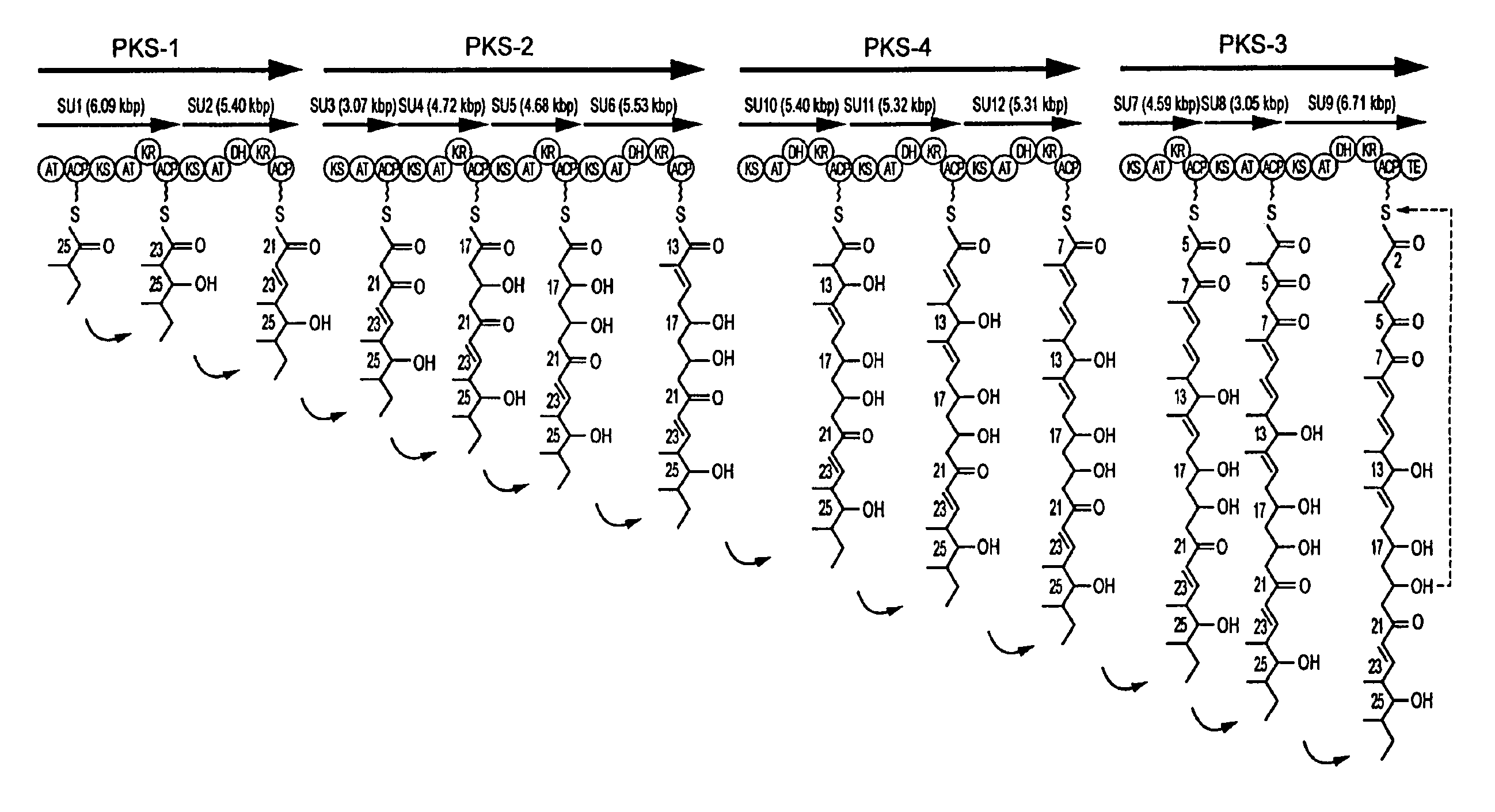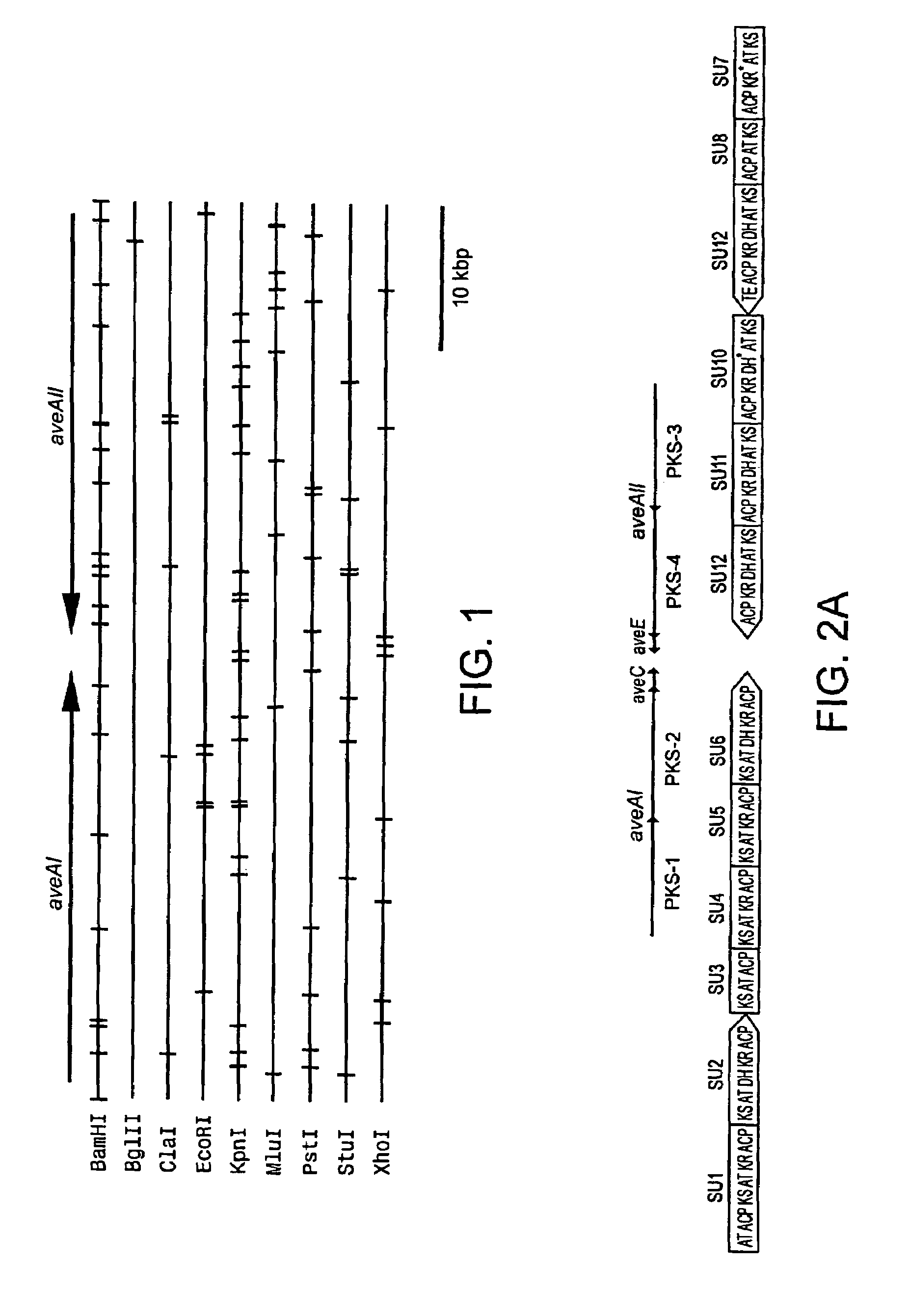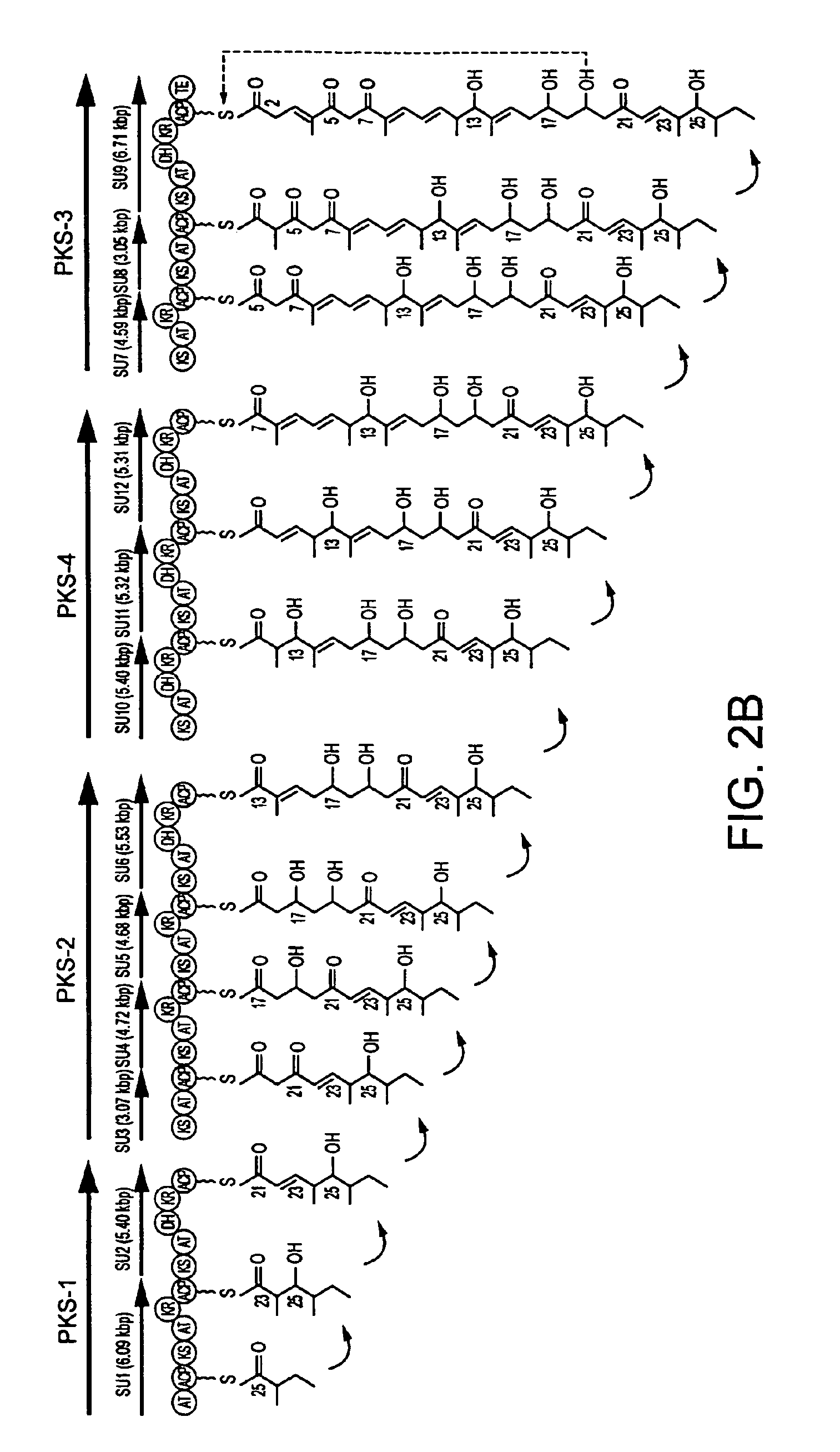Avermectin aglycon synthase genes
a technology of avermectin and aglycone, which is applied in the direction of lyase, transferase, enzymology, etc., can solve the problems of not revealing the nucleotide sequence, unable to predict the structure of the entire avermectin polyketide synthase, and difficult to carry out such improved-breeding
- Summary
- Abstract
- Description
- Claims
- Application Information
AI Technical Summary
Benefits of technology
Problems solved by technology
Method used
Image
Examples
example 1
Determination of the Nucleotide Sequence of the Avermectin Aglycon Synthase Gene of Streptomyces avermitilis
[0376]A nucleotide sequence of the DNA encoding avermectin aglycon synthase derived from Streptomyces avermitilis K2033 (U.S. Pat. No. 5,206,155, FERM BP-2773) was determined as follows.
[0377]Continuous or overlapping DNA fragments within the avermectin aglycon synthase gene were subcloned from plasmids containing a fragment of the avermectin aglycon synthase genes (aveAI and aveAII) co-isolated with a gene encoding avermectin B5-O-transmethylase (aveD; Gene, 206, 175-180 (1998)). Nucleotide sequences of the inserted DNA fragments in these subclones were then determined.
[0378]More specifically, the entire nucleotide sequences of aveAI and aveAII were determined by subcloning BamHI-treated fragments of 3.4 kbp, 2.0 kbp, 0.5 kbp, 6.8 kbp, 7.0 kbp, 7.8 kbp, 3.7 kbp, 4.8 kbp, 1.3 kbp, 2.4 kbp, 0.7 kbp, 1.0 kbp, 5.4 kbp, 2.5 kbp, 1.9 kbp, 0.1 kbp, 7.0 kbp, 3.1 kbp, 4.7 kbp and 1.3...
example 2
Production of Avermectin B2a Alone by Nucleotide Modification of Dehydratase Domain in Module 2
[0379]Streptomyces avermitilis K2038 (FERM BP-2775) produces avermectin B1a and B2a.
[0380]The information of avermectin aglycon synthase genes (SEQ ID NOS: 1 and 2) derived from the avermectin-producing strain, which were obtained and sequenced in Example 1, indicated that avermectin was biosynthesized through the biosynthetic pathway shown in FIGS. 2A-2C.
[0381]Avermectin B1a differs from avermectin B2a only in that avermectin B1a has a double bond between 22- and 23-positions in its aglycon part, while avermectin B2a has a single bond between 22- and 23-positions and a hydroxyl group at 23-position in its aglycon part.
[0382]The biosynthetic pathway for avermectin found above indicated that avermectin aglycon synthase domain DH of SU2 (DH2) is responsible for the formation of a double bond between 22- and 23-positions in the aglycon part of avermectin B1a and that avermectin aglycon syntha...
PUM
 Login to View More
Login to View More Abstract
Description
Claims
Application Information
 Login to View More
Login to View More - R&D
- Intellectual Property
- Life Sciences
- Materials
- Tech Scout
- Unparalleled Data Quality
- Higher Quality Content
- 60% Fewer Hallucinations
Browse by: Latest US Patents, China's latest patents, Technical Efficacy Thesaurus, Application Domain, Technology Topic, Popular Technical Reports.
© 2025 PatSnap. All rights reserved.Legal|Privacy policy|Modern Slavery Act Transparency Statement|Sitemap|About US| Contact US: help@patsnap.com



